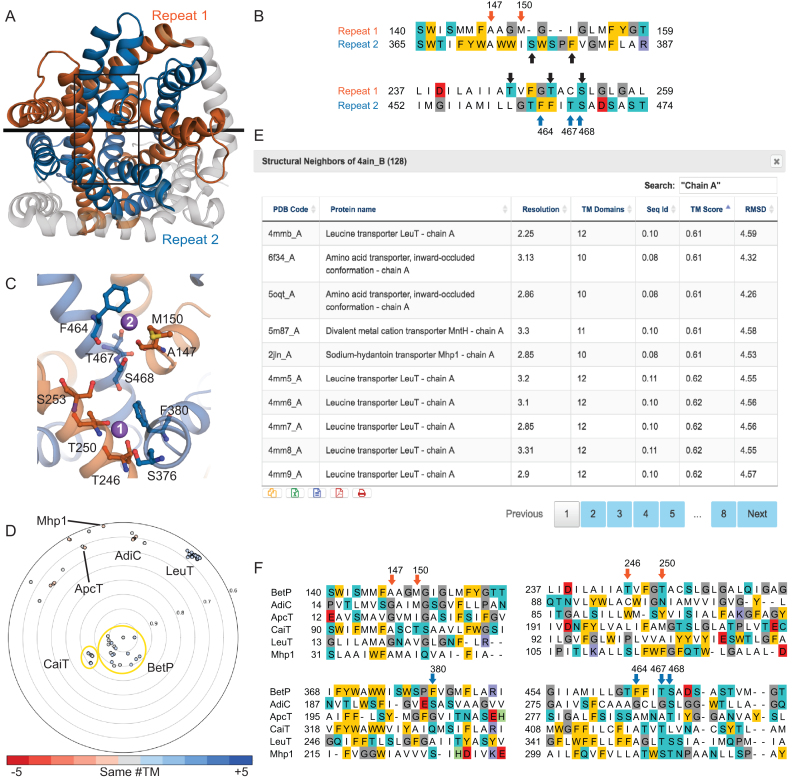Structure, function, and symmetry of transmembrane proteins
Transmembrane proteins (TMPs) compose about 30% of the proteome of every organism, but their 3D structure is notoriously difficult to determine experimentally, making up only 2% of the PDB. Despite having vastly diverse functions, TMP structures are often very similar due to the geometrical and physical constraints of the lipid bilayer. This, in turn, promotes a staggering variability in their primary sequence, which must compensate in order to maintain interactions with high specificity and sensitivity. Navigating, comparing and clustering membrane protein structures is thus very challenging. This is why we conceived EncoMPASS, a database that relates sequence, structure and symmetry of TMPs. EncoMPASS is a precise and curated benchmark, and the starting point for many of our studies: how can we classify membrane protein structures? What roles do internal symmetries hae in the dynamics and function of TMPs? How are evolutionary trajectories shaped for TMPs? This line of research is developed hand-in-hand with Lucy R. Forrest and Antoniya A. Aleksandrova at the CSB Lab at NINDS (NIH, Bethesda).

Selected software and publications:
[EncoMPASS] [MemStats] [EncoMPASS]
